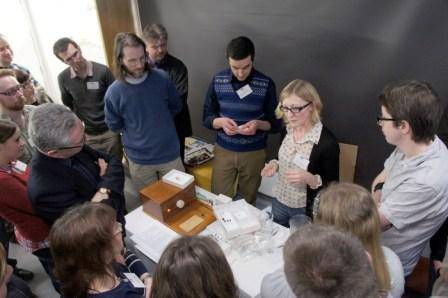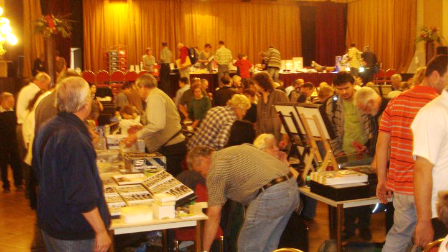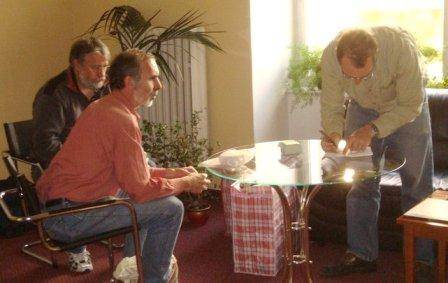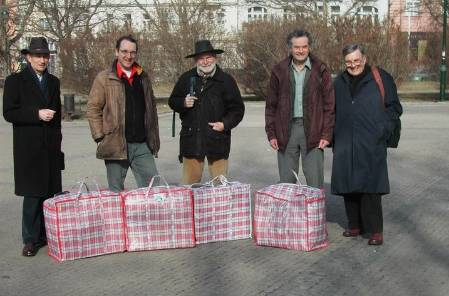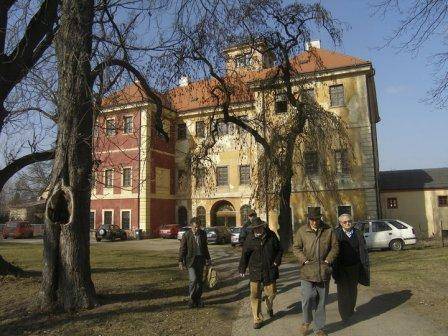As entomologists it is not only taxonomy that we are concerned with; we collect and study beetles in order to give a name to a species, so that conservationists, ecologists, even policy makers, can make decisions that hopefully will benefit the environment and the little creatures that live within and depend upon it.
However, we practice a different kind of insect conservation here in the Museum, a very specific specimen level conservation which ensures that the specimens we care for (and many of these are over 200 years old) remain readily available to science, to inform the very things mentioned above.
This week let’s look at verdigris. Not the kind of lovely blue-green patina found on Greek statues or the copper paint used to illuminate ancient manuscripts, rather the copper alloy of some entomological pins, which when exposed to the fats and lipids found in an insects’ body (as well as the gases found within an insect drawer), react to cause a ‘filamentous explosion’ of the alloy, and can ultimately destroy the body of an insect.
Some Cerambycidae affected by verdigris - note the specimen in the centre whose wing is becoming disslocated from the body
Here is what you don't want to happen - ever! Fifteen years of verdigris growth (specimens retained for demonstration purposes, courtesy of Malcolm Kerley)
So what is verdigris? The name verdigris originates from the Old French word verte-grez, an alteration of vert-de-Grèce (green of Greece), since it was used by Greek artists as a pigment for painting and other artistic crafting.
Here is the chemistry bit:
Verdigris is a green pigment which forms when copper, brass (copper and zinc) or bronze (copper and tin) is exposed to air, seawater or organic substances such as insect lipids over a period of time. Verdigris is primary a copper salt that is commonly found as carbonate, but it also can be found as a chloride (i.e. if sea water is present) and as an acetate (i.e. if acetic acid is present); and less commonly as a formate, hydroxide and sulphate. Secondary components of verdigris are various other metallic salts, organic and inorganic acids, gases and water. All the components are in an ever-changing and extremely sophisticated chemical equilibrium which depends on the environment.
Historically entomological pins were not made of the robust and non-corroding stainless steel we use today. They may have been made from various alloys, including copper, which at the time, would not have been recognised as potentially causing harm to the specimen. This is one of the major pitfalls of caring for an historical collection. With over 9,000,000 specimens, we could spend our lifetimes (and we do) conserving and curating!
We keep our collection in a temperature and humidity controlled environment, but verdigris can still occur, and decades ago, when we didn’t know as much about collections care, specimens may have been kept in an environment conducive to verdigris forming.
Pins affected by verdigris (specimens removed - obviously!)
One of our curators, Malcolm Kerley, has indeed decades of experience of caring for historical collections. Here he is giving a demonstration on specimen repair to some MSc Students from Imperial College
With all our combined experience and knowledge we gave a demonstration at the last Natural Sciences Collections Association (NatSCA) conference at The Great North Museum in Newcastle to fellow curators and museum / academic professionals on how to repair specimens.
My colleague Alessandro Giusti, who is a Lepidoptera curator and I showed the various ways specimens can be extricated from their damaged pins and re-pinned onto a shining new stainless steel pin which should survive for another 200 years!
Alessandro demonstrated the amazing specimen exploding machine (or more sensibly put, ‘the de-pinning machine’) which essentially involves passing an electrical current through the pin, which heats up, in turn melting some of the dried fats from within the specimen. This is actually a safe method of removing Lepidoptera from pins, as other methods could damage the body, and more importantly the scales. (It has been known for the specimen to ‘explode’ when the current gets a bit too racy, but of course, that has never happened to us!)
Here we have the 'Heath-Robinson' of all de-pinning machines.. the NHM, cutting edge science at its most dynamic...
A typical example of how verdigris affects Lepidoptera
I demonstrated the dry and wet methods of removing beetles from corroded pins. The wet method involves soaking the specimen in heated distilled water for a few minutes (approx. 60-70°C) until it is softened enough to be slipped from the pin.
A beetle suspended by a plastazote float in distilled water.
Re-pinning involves allowing the specimen to dry thoroughly and then using a thicker pin than the one previously removed to be placed in the same hole. The labels are placed on the pin in the same order and a further label is added to the specimen to record the conservation measure, as well as recording this on our database.
Here we both are demonstrating to our enthralled audience(!) Notice complimentary butterfly blouse as modelled by me!
We often retain our historical pins as believe it or not they can tell us a lot about a specimen / collection, for example, certain collectors only used a certain type of pin (Sir Joseph Bank’s Collection used immaculate (and probably very expensive) pins with hand spun heads which today still retain their original condition!
For more information our protocol on Verdigris specimen repair will soon be made available on the NatSCA website.




